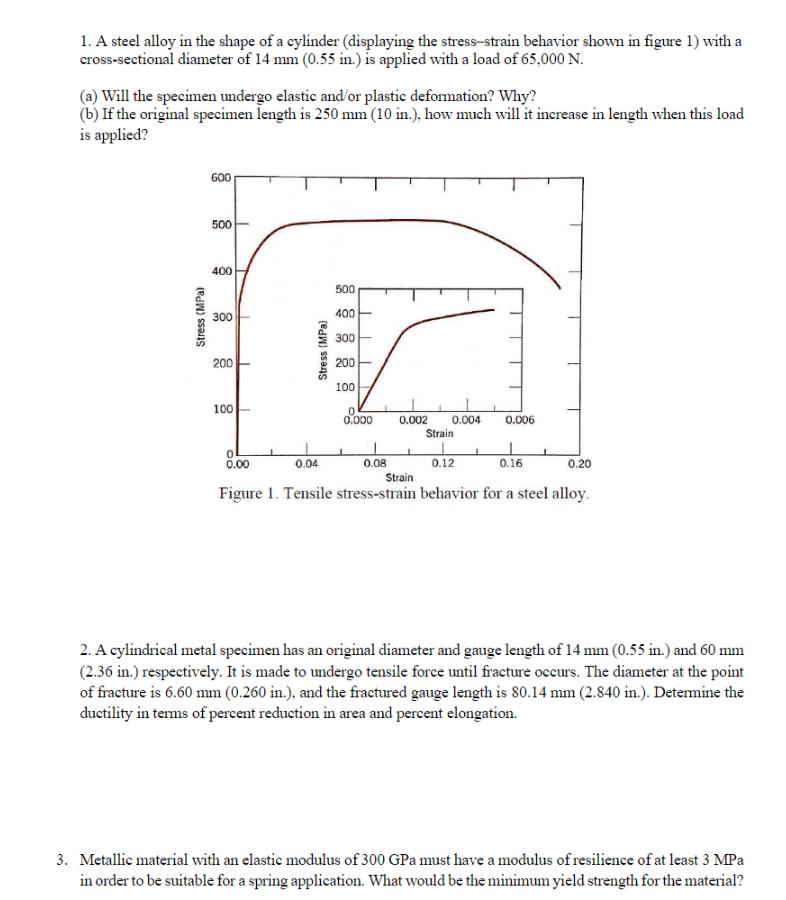Answered step by step
Verified Expert Solution
Question
1 Approved Answer
1. A steel alloy in the shape of a cylinder (displaying the stress-strain behavior shown in figure 1) with a cross-sectional diameter of 14

1. A steel alloy in the shape of a cylinder (displaying the stress-strain behavior shown in figure 1) with a cross-sectional diameter of 14 mm (0.55 in.) is applied with a load of 65,000 N. (a) Will the specimen undergo elastic and/or plastic deformation? Why? (b) If the original specimen length is 250 mm (10 in.), how much will it increase in length when this load is applied? Stress (MPa) 600 500 400 300 200 100 0 0.00 Stress (MPa) 500 400 300 200 100 0 0.000 0.002 0.004 0.006 Strain 0.04 0.08 0.12 0.16 Strain 0.20 Figure 1. Tensile stress-strain behavior for a steel alloy. 2. A cylindrical metal specimen has an original diameter and gauge length of 14 mm (0.55 in.) and 60 mm (2.36 in.) respectively. It is made to undergo tensile force until fracture occurs. The diameter at the point of fracture is 6.60 mm (0.260 in.), and the fractured gauge length is 80.14 mm (2.840 in.). Determine the ductility in terms of percent reduction in area and percent elongation. 3. Metallic material with an elastic modulus of 300 GPa must have a modulus of resilience of at least 3 MPa in order to be suitable for a spring application. What would be the minimum yield strength for the material?
Step by Step Solution
There are 3 Steps involved in it
Step: 1

Get Instant Access to Expert-Tailored Solutions
See step-by-step solutions with expert insights and AI powered tools for academic success
Step: 2

Step: 3

Ace Your Homework with AI
Get the answers you need in no time with our AI-driven, step-by-step assistance
Get Started


